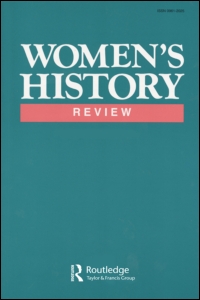
Women's History Review
Volume 4, Issue 1, Mar 1995
Pages 5-23
- DOI: 10.1080/09612029500200074
- Print ISSN: 0961-2025
- Online ISSN: 1747-583X
Heterosexuality, feminism and The Freewoman journal in early twentieth-century England[1]
- By
- Lucy Bland
University of North London
Abstract
In 1911 a new feminist paper appeared calledThe Freewoman. Its life was short, its circulation small, but its reputation was notorious and its influence of some significance in feminist and radical circles. The paper's notoriety stemmed largely from its open discussion of sex, or rather heterosexuality, since lesbianism and homosexuality were barely mentioned. Combining older feminist concerns with newer sexological concepts, women and men discussed the meaning of sex: the relationship between sex and reproduction, the vices and virtues of birth control, passion, chastity, self-control, masturbation, the spirituality of ideal sex. During this brief moment,The Freewoman discussed sex “loudly and clearly and repeatedly”, to quote Rebecca West: it was to be a long time before feminists were to do so again.